In Australia, spiders are a fact of life. However, despite coming into contact with them nearly every day, many of us know very little about them. Often the most basic facts about these animals are mixed up in myths and urban legends which generate fear and confusion.
Spiders belong to the order Araenae within the class of Arachnida – This group of animals include scorpions, ticks, mites and pseudoscorpions. In Australia, about 10,000 species of spiders are known.
Spiders are Invertebrates (animals without a backbone), Animals with an exoskeleton (a skeleton on the outside of their body), Predators (animals that capture other animals to eat) and Venomous (not poisonous), though usually this venom has negligible effects on humans.
What We Do…
Although we do specifically treat for spiders, we normally group this treatment in what we call a ‘General Pest Treatment.’ This is combined with an Ant and Native Cockroach pest management program and comes with a 6 – 12 month free service period in most cases. The information below is general advice only as all situations are different and therefore can require individually geared control measures, such as direct gel baiting for ants.
What To Expect…
The truth is that even with the most comprehensive spider treatment we will likely only reduce 80% – 90% of the spider population. Most pest controllers will state that your home will be completely spider free and then come up with a range of excuses to why spiders are still present. Spiders need to come into contact with the treatment for it to work and even when they do so, they won’t just drop dead on the spot.
How Much…
We compete in service rather than price and we take no shortcuts in any aspect of our practice. Every spider control job can have its own challenges and solutions so we offer custom quotes for the best results.
Call us today to book a FREE quote tailored to your property!
General Pest Treatments
A general pest treatment covers Ants, Cockroaches and Spiders. Please leave any webbing prior to the visit so we can assess areas of high activity. We will treat the roof void and subfloor space with a statically charged dust that clings to the surfaces of the areas exposed, making an unliveable environment for pests. We will inject the same dust into the service entry points and pest harbourage areas internally and externally, stopping pests from being able to enter from those areas.
The exterior of your home is then treated with the highest quality product available on the market today. We will treat the window frames, door frames, behind guttering and downpipes, eaves, perimeter. The interior of your home is also treated with a child and pet friendly product applied in areas exclusively where pests are gaining access, finding harbourage and generally hanging around.
Finally, a specifically formulated granulated sand is applied around the perimeter of your home and swept into any cracks and crevices in paths attached to your home.
Ready to make a booking? Call 1300 860 439 today!
Make a booking for our Spider Control online!
Fill out your details in the form below & our team will be in touch to organise your booking request.
Information about specific spider species can be found below:
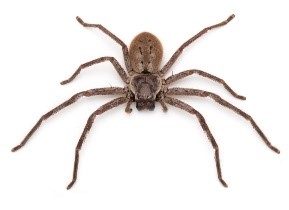
Huntsman Spiders
(Sparassidae)
Huntsman spiders have probably been responsible for more shrieks of terror than any other spider in Australia. Huntsman spiders have 8 eyes in two more or less straight rows, the largest usually the outermost on the front row. The carapace is oval and flattened, squared off at the front in the eye region. They have long legs with two claws and dense tufts of hairs. In nature they are mostly found under bark, sometimes dozens or more under bark on dead trees. Some live in rock crevices. In houses they find places to breed under or behind objects or surfaces protecting them from the light. Female make a roughly circular egg sac.
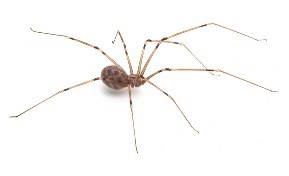
Daddy Long-legs Spiders
(Pholcidae)
Daddy Long-legs Spiders are large with long, slender legs. The abdomen is pea shaped, smaller in males, with large brown spots arranged in pairs down either side of a translucent grey central band and spread around the rest of the abdomen. The cephalothorax is flat and disc-shaped with a dark line running down the back half. The legs are brown to orange-yellow and banded. Males have very swollen pedipalps.
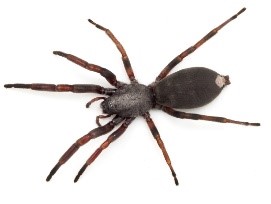
White-tailed Spiders
(Lampona Cylindrata, Lampona Murina)
White-tailed spiders are slender black with a long, tear-drop shaped abdomen, covered in fine hairs. Distinctive white spot on the tip of the abdomen, and four additional white patches may also be visible. Cephalothorax is wide at the back, narrowing at the front and domed. The legs are thick, dark red to black, with contrasting bands in juveniles. They are commonly encountered in the house, especially inside objects that have been left on the floor (clothing). They may also be seen wandering across the floor or walls. Their bite has falsely been reported to causing necrotic legions, however this is not the case. The true symptoms of White-tailed spider bite are not considered serious, and at most will cause local pain, with a possible itchy red mark lasting a week or more.
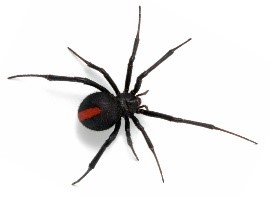
Redback Spiders
(Latrodectus Hasseltii)
Adult females are black with a red stripe on the top of the abdomen, though some individuals may be brown and orange. Males and juveniles are smaller and more slender with cream to white marbling on the abdomen, flecked with red or orange. While surface marking may vary, a red to orange hourglass-shaped marking on the underside of the abdomen is distinct to this genus. They are found beneath outdoor furniture and pot plants, in old tyres, inside sheds, underneath houses, beneath rocks and logs. Often they are encountered when gardening or cleaning infrequently used areas.
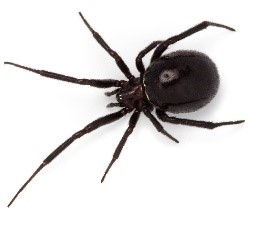
Brown House Spiders
(Steatoda Grossa)
Members of the Theridiid family have shiny, slender legs, with a small cephalothorax and a larger abdomen. They are commonly known as ‘Cupboard Spiders’ and their colour can range from a brown or reddish plum to satiny black. The abdomen often has white or beige spots, a frontal crescent, and sometimes, small red spots or a thin red line (but never a stripe like a Redback Spider.
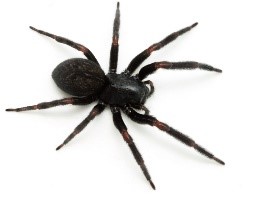
Black House Spiders
(Badumna Insignis)
Stocky, hair-covered spider with a brown to black body. The abdomen is oval, with a pattern of light spots and arrow shapes at the back that may be difficult to see in many individuals. The thick legs are often held tucked over the body. The cephalothorax is barrel-like, with at least some hair. During the day they hide in a silken retreat. The legs may be visible near or at the end of the funnel. When the spider senses vibrations or is disturbed, it quickly disappears back to the retreat.
Ready to make a booking? Call 1300 860 439 today!



